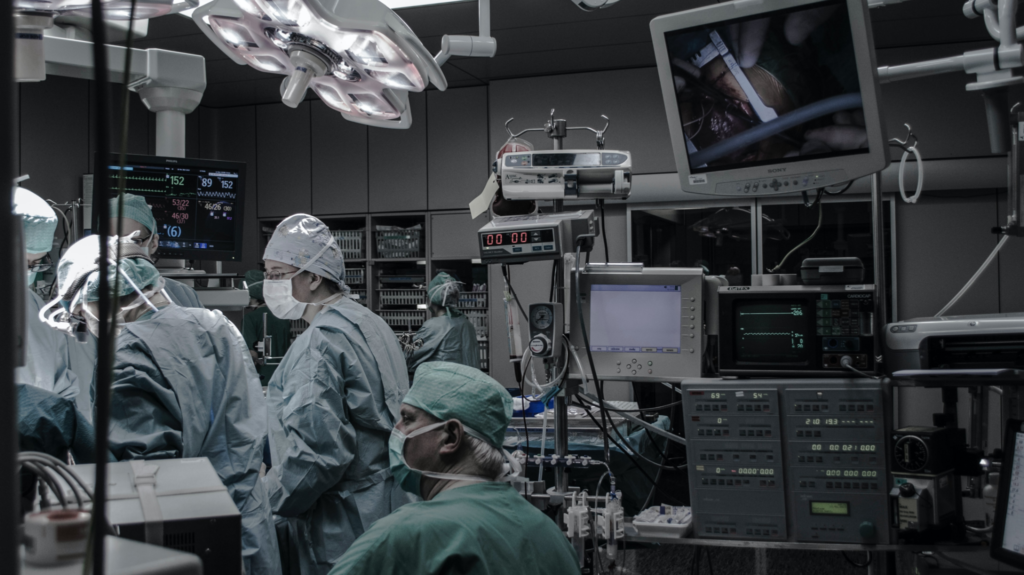In recent years, the healthcare sector has become a prime target for cyberattacks, leading to significant disruptions in operations and patient care. The American Hospital Association (AHA) reports a staggering 57% increase in cyberattacks on U.S. hospitals in 2022 alone, with the sector now ranking second in the nation for the most cyberattacks. These breaches not only threaten data security but also pose direct risks to patient safety, operational efficiency, and financial stability. This article explores the profound impacts of these cyber threats, detailing the operational disruptions, financial implications, and the urgent need for robust cybersecurity solutions like DocBox’s Clinician Assistant in Critical Care to safeguard healthcare systems.

1. U.S. health care organizations are the prime target of cyber attacks
According to AHA, the risk of cyber attacks on U.S. hospitals has been a growing concern, with several facts and challenges highlighting the severity of the issue:
- Increase in Attacks: There has been a 57% increase in the number of cyberattacks in 2022, with healthcare organizations in the U.S. suffering an average of 1,410 weekly cyberattacks per organization.
- Healthcare as a Target: The healthcare sector ranked second out of all sectors for the most cyberattacks in the U.S., which is 86% higher than in 2021.
- Patient Safety: Cyberattacks on hospitals are not just a data security issue but a direct threat to patient safety. The number of attacks on U.S. hospitals each year doubled between 2016 and 2021.
- Operational Disruptions: Hospitals face significant operational disruptions and patient care challenges due to cyberattacks. The use of online technology in healthcare has amplified the digital attack surface, making hospitals an appealing target for internet thieves.
- Mortality Rates: There is evidence suggesting that cyberattacks against U.S. hospitals have led to increased mortality rates. Two-thirds of respondents in a study who had experienced ransomware attacks said they disrupted patient care, and 59% found they increased the length of patients’ stays.
Just last month, a cyberattack on Ascension hospitals caused significant disruption, with nurses and visitors reporting chaotic conditions. “This is truly a crisis situation and it needs to be treated as such,” a nurse advocate known as “Nurse Erica” on social media explained to News 2. “We are a week in now at this and there is no end in sight. They are saying it’s very tense at work, the atmosphere, nurses are worried about patient safety, and also about their own nursing license because all of the safety checks that we have in place have basically been eliminated,” the RN explained. The attack compromised systems and hindered access to patient records, leading to delays in care and concerns over patient safety. This incident underscores the growing threat of cyberattacks on healthcare facilities and the critical need for robust cybersecurity.
2. The Financial Impacts of Cyber Attacks on U.S. Hospitals
The financial impacts of cyber attacks on U.S. hospitals in 2024 have been profound and multifaceted:
- Disruption of Patient Care and Finances: The cyberattack on Change Healthcare, a subsidiary of UnitedHealth Group, has been labeled as one of the most significant cyberattacks on the U.S. healthcare system. It disrupted patient care and halted billions of dollars in transactions, threatening the financial viability of hospitals and other healthcare providers.
- Cash Flow Interruptions: A survey by the American Hospital Association (AHA) revealed that 94% of hospitals experienced disruptions in cash flow due to the cyberattack, with over half reporting substantial financial damage because of the inability to handle claims efficiently.
- Cost of Cyber Attacks: A study by the Ponemon Institute showed that in 2023, the average total cost for a single cyber attack was $4.9 million, marking a 13% increase from the previous year.
These points highlight the urgent need for robust cybersecurity strategies to mitigate financial risks and ensure the continuity of healthcare services.
3. Comprehensive Cybersecurity Solutions with Clinician Assistant in Critical Care
Amidst escalating cyber threats, DocBox’s Clinician Assistant in Critical Care emerges as a key solution, bolstering hospital resilience and safeguarding patient data. The platform integrates advanced security measures to mitigate risks, ensure regulatory compliance, and uphold high patient care standards.
Security Solutions:
- Strengthened Device Security: Protects medical devices, preventing them from becoming attack vectors.
- Network Security Enhancement: Utilizes secure network architectures with firewalls and intrusion detection systems.
Clinical Impact:
- Ensured Device Reliability: Maintains the accuracy and reliability of medical devices.
- Upheld Data Integrity: Ensures secure data handling for accurate clinical decisions.
- Swift Response and Recovery: Minimizes downtime with rapid detection and response protocols.
Financial Considerations:
- Prevention Cost Savings: Reduces long-term costs by preventing breaches.
- Insurance Premium Reductions: Enables negotiation of lower cybersecurity insurance premiums.
- Compliance and Liability Management: Ensures regulatory compliance, avoiding fines and legal costs.
The Clinician Assistant in Critical Care plays a crucial role in fortifying healthcare systems against the rising tide of cyberattacks. By implementing extensive security protocols, it protects both the technological infrastructure and clinical operations. This comprehensive approach not only improves patient care but also manages financial risks efficiently. Discover more by scheduling your demo now: https://docboxmed.com/demo/









